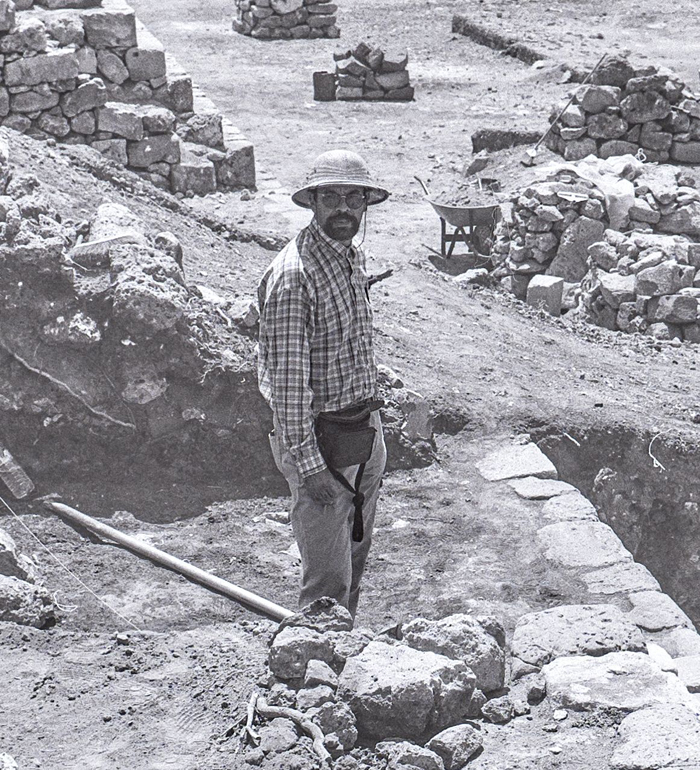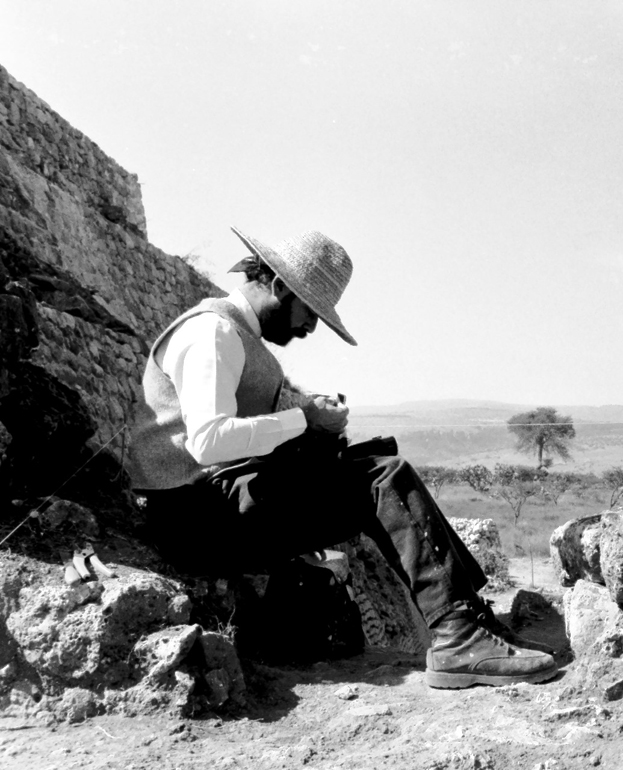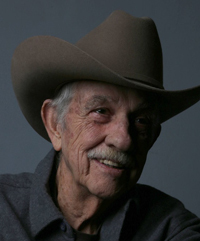
photo: Richard Vidargas
*
Español
September 1, 2024
by César Arias
Last month our dear friend Luis Felipe, an extraordinary historian and archaeologist from San Miguel de Allende, passed away. For years he directed his talent and passion to the archeology of our region, which he traveled widely for years, publishing the Archaeological Atlas of Guanajuato since the 1980s, as well as various scientific articles.
In addition to his activity for the creation of the Casa de Allende Historical Museum, of which he was director, and his contributions to the knowledge and defense of the cultural heritage of our city, he dedicated his greatest efforts to the Cañada de la Virgen archaeological site. He carried out the pioneering work of exploration and restoration of the site, with the valuable collaboration of Don Patterson, a friend and researcher residing in San Miguel, and with a team of colleagues and trained workers, whom he always supported. There were more than ten years of continuous and professional activity, which was unfortunately arbitrarily truncated at the end of the 90s, due to the interests and maneuvers of the new owners of the estate where the pyramids are located. It was a terrible injustice, a very hard blow for both researchers, from which Luis Felipe was never really able to overcome, since Cañada de la Virgen had become the great mission of his life.
Luis Felipe Nieto had several interactions with the Botanical Garden. The first of them, around 1994, was the joint realization of the first botanical inventory of the archaeological zone, focused on the trees and shrubs of the site. And years later, in El Charco, Luis Felipe carried out the exploration and restoration of the old aqueduct, which vestiges still exist in the canyon, that carried water to the 16th century water mill.
Today we are struck by the absence of Luis Felipe, a good friend and great archaeologist from San Miguel. And we accompany Rosa Velazquez, his loving wife and companion on the road, as well as his brothers and dear friends, in their mourning.
***
**

photo: Henry Miller
*
by Donald Patterson
I can see clearly now that the few years I have left will be spent sitting, leaning into my keyboard and staring at a 51" monitor like I am this morning, until I can't maintain that posture. I will be 82 this coming November, so that end might not be too long in coming.
This morning I have a dilemma that fills my thoughts. The day before yesterday my friend and partner of many National Institute of Anthropology and History (INAH) projects over many years, Luis Felipe Nieto, died. Over the last few hours my feeling between sorrow and gladness roll in and out like the tide. This is because Luis Felipe was sick for a very long time. And over time he became more and more withdrawn from reality. Rosa, his lovely wife, with loving kindness, looked after him. I am glad that she now has some sort of relief, a little more time for herself.
Luis Felipe Nieto Gamiño and I met for the first time in 1978 in the north bus terminal of Mexico City. We were both waiting for transportation to San Miguel via a second class bus. It was strange that, although I already knew members of his family, we had never crossed paths before. We discovered that we both spent each week in Mexico City and returned to San Miguel on the weekends.
After competing successfully in international martial arts, Luis Felipe had decided to make a career of archaeology and was attending the INAH. I was working at the Templo Mayor, also for INAH, under Eduardo Matos Moctezuma. Luis Felipe and I sat together on the four-hour bus ride, talking about the sites along the Río Laja drainage and in the valley of San Miguel.
It was a brief encounter and I rarely saw Luis Felipe after that chance meeting. But several years after that bus ride, Luis Felipe and I were to work together. He came to my Mexico City apartment during the early winter of 1983 and proposed that my archeological documentation team move to San Miguel and direct a settlement pattern study (mapping, documenting, evaluating and collecting samples for analysis from ancient sites) along the central portion of the Río Laja. He wanted to write his professional thesis on the area.
Thank you Luis Felipe for bringing me back to San Miguel and for bringing us together to work on projects of importance.
While working on the settlement pattern study in San Miguel, Luis Felipe joined me as a consultant on my own Chichen Itza project. We had more than doubled the number of chultuns, below ground vaults, that the Killmartin and O'Neill map of the Carnegie Institute project found in the late 20's and early 30's.
At the time, these chultuns were believed to be for rainwater harvesting storage. Indeed, many of them even had stone canals directing rainwater into them. However, a couple of them were located on the top of mounds where the inclination of the topography was downslope from the entry hole. I wanted Luis Felipe's opinion about my theory that at least these two chultuns were for storing grains. Or at least some other explanation.
However after examining three chultuns. The first contained a rattlesnake, the second a next of wasps and, as we approached the third, a flock of bats that flew out its aperture , Luis Felipe commented that he preferred his field archaeology in the Altiplano.
We worked together on seven projects together:
•the Chichen Itza project,
•the Yaxchilan project,
•the settlement pattern study,
•the pilot project and subsequent Atlas Archaeological of Mexico,
•the Allende Museum project
•the Canyon of the Virgin project
•the Camino Real project.
I know of two other projects he worked on. One with Beatriz Braniff and another concerning ancient rock art with Martha Munoz. However, I am sure he worked on many more that I don't know about.
The tragedy of his life being cut short right at the height of his academic achievements fills my eyes with tears.
**************

Donald Patterson: I have been called a lot of things in my life. I have had to listen to a lot of heated and vitriolic language used to describe me. I have been called , a SOB, a liar, a jerk, a hick, a misogynist, a communist, a homophobic, a racist, a bastard, a nigger-lover (Shreveport Louisiana police station – spring break, 1959), a bore, a cad, a Republican, a Democrat, a redneck and just yesterday, cantankerous. These are just names my English-speaking friends call me. Needless to say, the list in Spanish is much longer, but here are a few: pendejo, ensansato, insipido, carbron, pinche, gringo, pinche gringo, anarchista, communista, capitalista, bolio, maricon, diablo, culero etc, etc, etc. However, I have a different image of myself.
The Scottish poet Robert Burns expressed my dilemma in verse in the late 1700's. Burns entitled the poem, To a Louse, On Seeing one on a Lady's Bonnet at Church. The last line says it all:
"Oh, would some Power the gift give us
To see ourselves as others see us!"
**************
*****
Please contribute to Lokkal,
SMA's online collective:
 ***
***
Discover Lokkal:
Watch the two-minute video below.
Then, just below that, scroll down SMA's Community Wall.
Mission

Visit SMA's Social Network
Contact / Contactar

